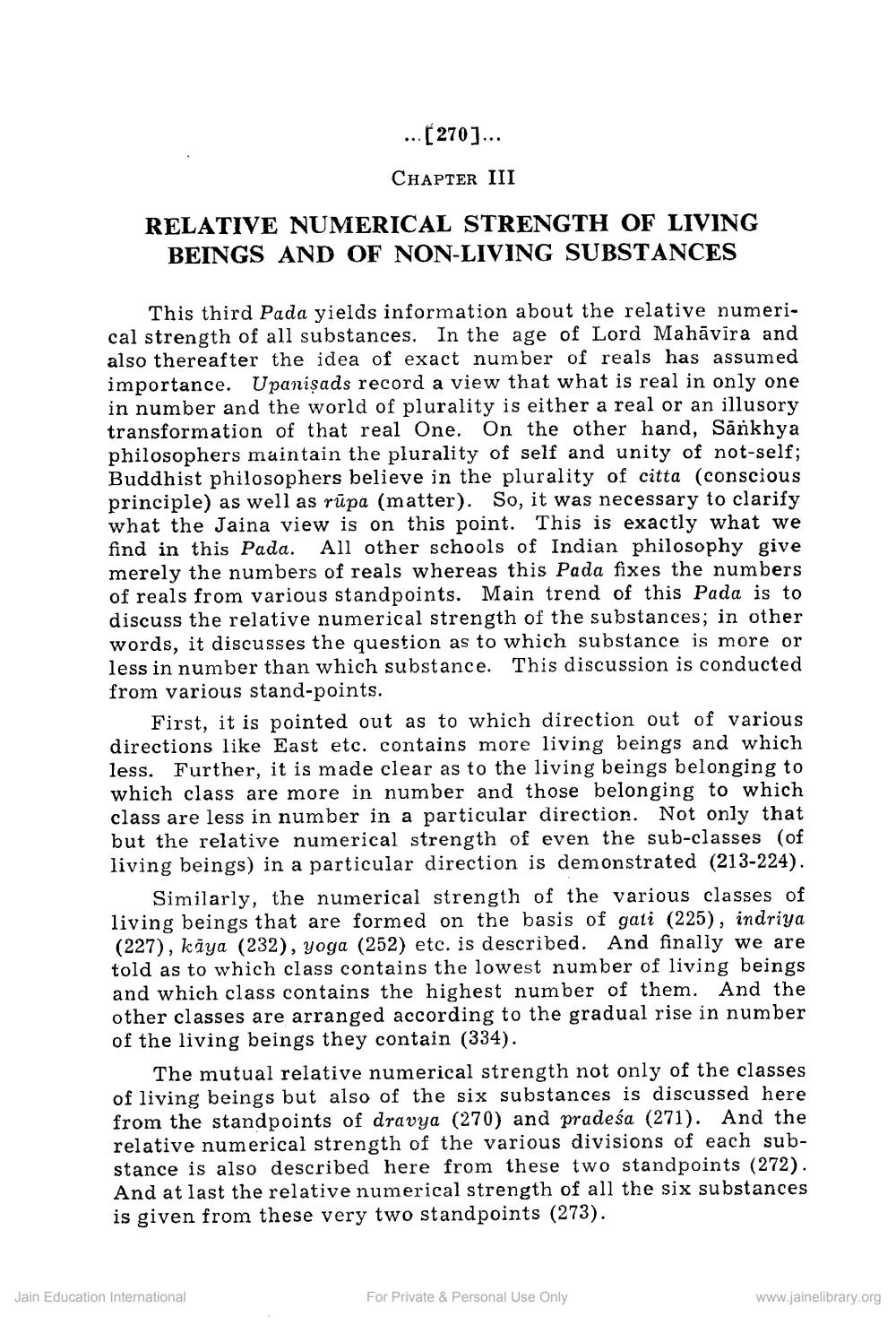________________
... [270]...
CHAPTER III
RELATIVE NUMERICAL STRENGTH OF LIVING BEINGS AND OF NON-LIVING SUBSTANCES
This third Pada yields information about the relative numerical strength of all substances. In the age of Lord Mahavira and also thereafter the idea of exact number of reals has assumed importance. Upanisads record a view that what is real in only one in number and the world of plurality is either a real or an illusory transformation of that real One. On the other hand, Sankhya philosophers maintain the plurality of self and unity of not-self; Buddhist philosophers believe in the plurality of citta (conscious principle) as well as rupa (matter). So, it was necessary to clarify what the Jaina view is on this point. This is exactly what we find in this Pada. All other schools of Indian philosophy give merely the numbers of reals whereas this Pada fixes the numbers of reals from various standpoints. Main trend of this Pada is to discuss the relative numerical strength of the substances; in other words, it discusses the question as to which substance is more or less in number than which substance. This discussion is conducted from various stand-points.
First, it is pointed out as to which direction out of various directions like East etc. contains more living beings and which less. Further, it is made clear as to the living beings belonging to which class are more in number and those belonging to which class are less in number in a particular direction. Not only that but the relative numerical strength of even the sub-classes (of living beings) in a particular direction is demonstrated (213-224).
Similarly, the numerical strength of the various classes of living beings that are formed on the basis of gati (225), indriya (227), kaya (232), yoga (252) etc. is described. And finally we are told as to which class contains the lowest number of living beings and which class contains the highest number of them. And the other classes are arranged according to the gradual rise in number of the living beings they contain (334).
The mutual relative numerical strength not only of the classes of living beings but also of the six substances is discussed here from the standpoints of dravya (270) and pradeśa (271). And the relative numerical strength of the various divisions of each substance is also described here from these two standpoints (272). And at last the relative numerical strength of all the six substances is given from these very two standpoints (273).
Jain Education International
For Private & Personal Use Only
www.jainelibrary.org




